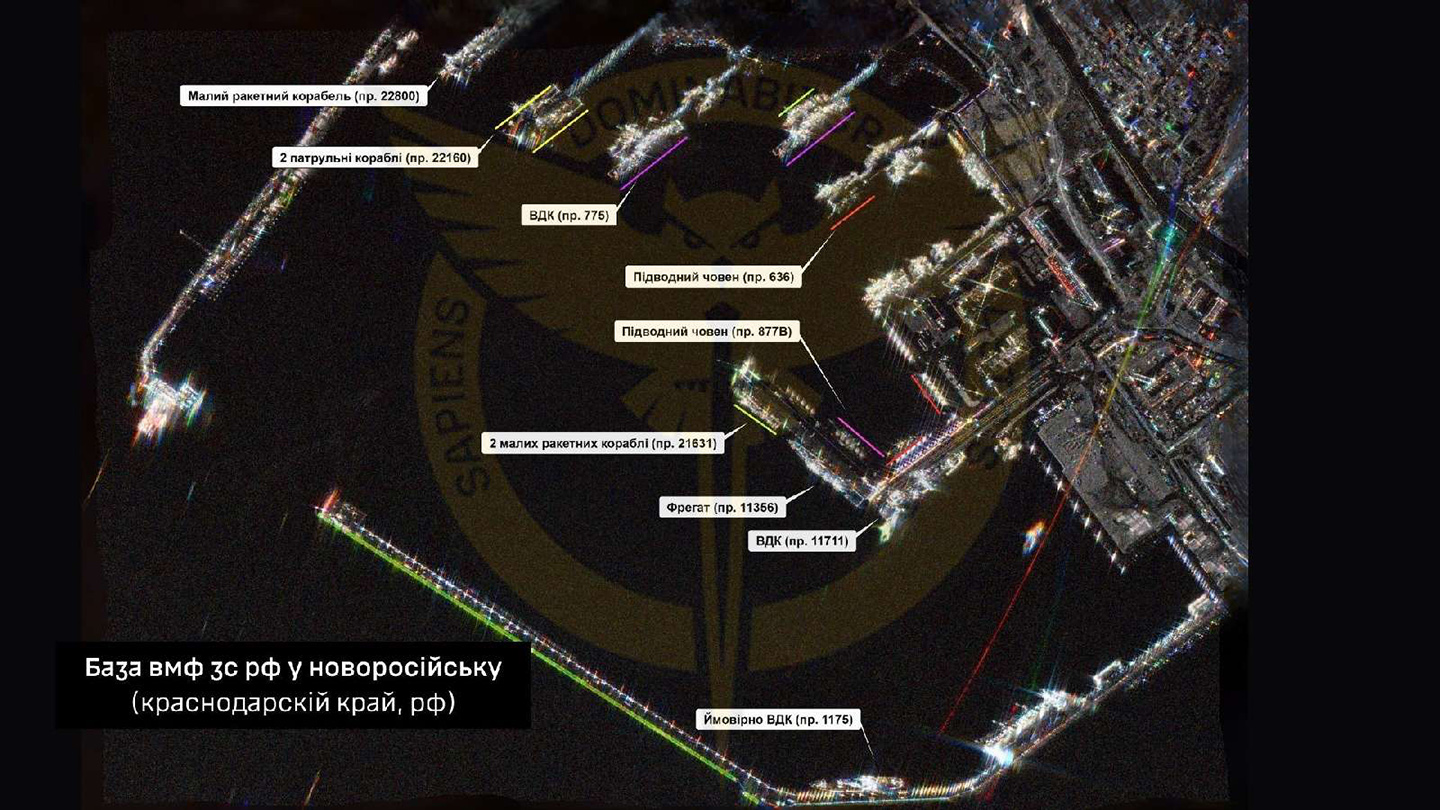More than 1,500 Russian targets worth billions of dollars have been destroyed over the past two years thanks to imagery from a crowd-funded satellite, Ukraine’s Defense Intelligence Directorate (GUR) said on Wednesday.
The spy agency said that 38% of the nearly 4,200 images collected by a satellite provided for Ukrainian use in August 2022 by the California-based ICEYE company were used to strike Russian targets during that period. The satellite has taken images over both Ukraine and Russia.
“The entire array of data obtained thanks to ICEYE was used for direct preparation of fire damage to the enemy,” according to GUR. “This is billions of dollars in losses for Russia, and the price of its aggression will grow!” While The War Zone could not independently verify that claim, a former U.S. official last year confirmed to us that Ukraine was putting the ICEYE satellite to good use on the battlefield.
The satellite and more than an additional two dozen others Ukraine has access to has enabled its forces to observe and strike a wide range of targets it would otherwise not have been able to see.
“During the period of use of the ‘people’s satellite’ and access to the ICEYE satellite constellation, our specialists took a total of 4,173 pictures of enemy objects,” said GUR. That includes 370 airfields, 238 air defense and radio technical intelligence positions, 153 oil depots and fuel warehouses, 147 missile, aviation weapons and ammunition warehouses and 17 naval bases.
The ICEYE satellite has captured points Russian permanent deployment locations, as well as training grounds, military towns, and mobilization deployment centers, the spy agency said.
You can see an image of Russian troops and vehicles at a training facility in Luhansk Oblast taken by the satellite below.
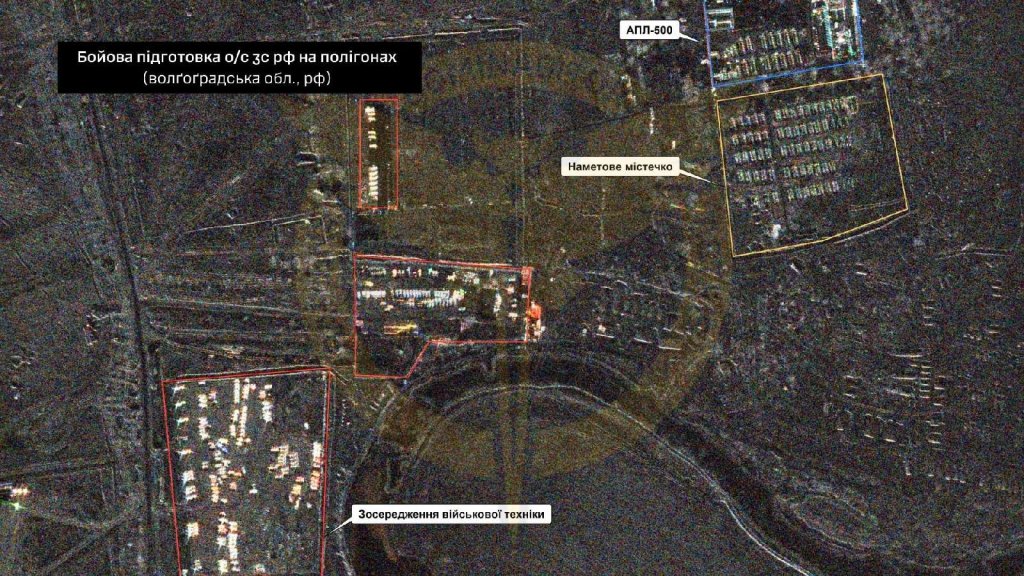
The following image shows an advanced Russian Nebo-M radar system as well as electronic and signals intelligence and intelligence, surveillance and reconnaissance equipment in Russia’s Belgorod Oblast.
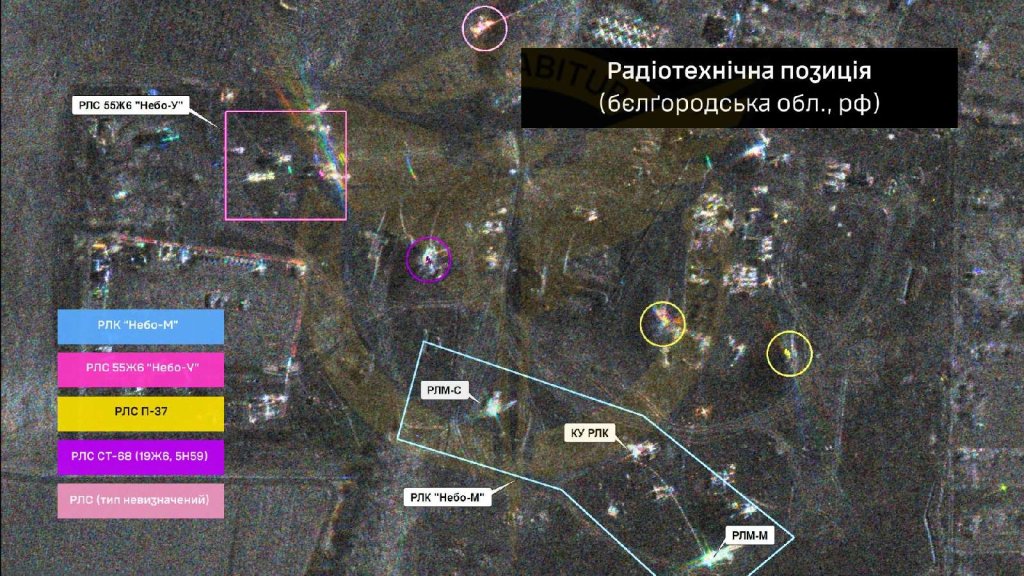
The satellite also took images over Russia’s Rostov Oblast. You can see camouflaged Russian vehicles there.
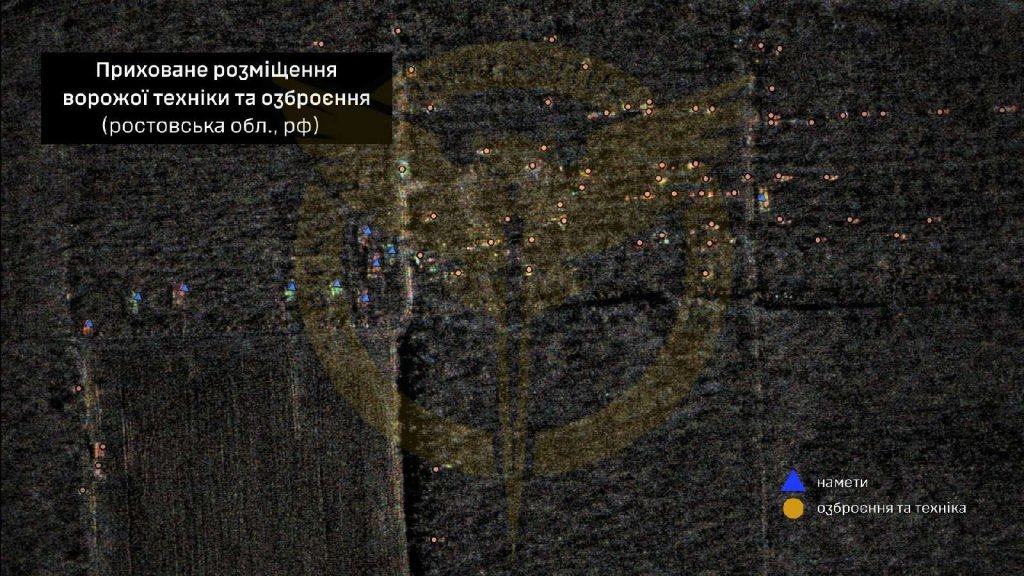
ICEYE agreed to “transfer full capabilities of one of its [Synthetic Aperture Radar] SAR satellites already in orbit for the Government of Ukraine’s use over the region,” the company said in its media release at the time. “The SAR satellite will be operated by ICEYE. In addition, ICEYE will provide access to its constellation of SAR satellites, allowing the Ukrainian Armed Forces to receive radar satellite imagery on critical locations with a high revisit frequency.”
Unlike optical satellites that rely on natural light conditions, SAR systems can capture images despite cloud cover, smoke, or dust that might block the view visually, and also do so at night. Metal objects in particular stand out in the imagery created by the active radar sensor, which can defeats camouflage efforts.
The company says it owns “the world’s largest synthetic aperture radar satellite constellation” and employs more than 700 people in the U.S., Finland, Poland and Spain.
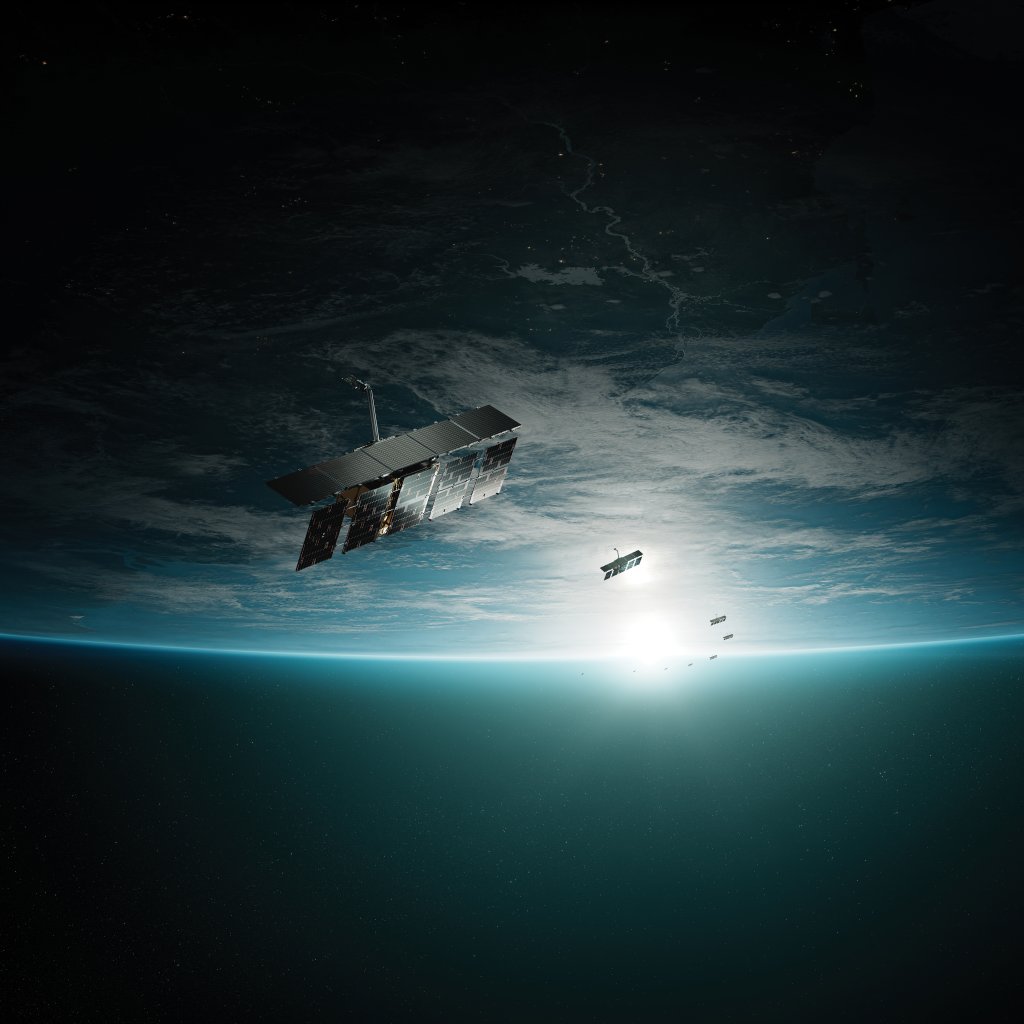
Aside from the intelligence that the U.S. and NATO allies provide Ukraine, its own ability to observe enemy activities from above are relegated to the tactical level with drones and on a wider but still limited scope via commercial satellite imagery. So, having constant and independent access to eyes in space is a major boon for the war torn country.
Reconnaissance from Earth’s orbit “allows receiving data both on the temporarily occupied territories of Ukraine and in other places on the planet where the military forces and means of terrorist Russia are located,” GUR stated.
“This allows tracking the dynamics of Russia’s personnel movements, revealing its military intentions with the aim of disrupting them,” according to GUR. The satellite “allows you to monitor the objects of the aggressor’s military-industrial complex and its logistics network, which includes the illegal bridge between Russia and occupied Crimea.”
The Kerch Bridge has already been attacked twice and is an ongoing target of Ukraine.
‘It’s not a question of will we strike or won’t we strike,” Lt. Gen. Kyrylo Budanov told The War Zone last September. “We’re doing that regularly so we will finish it. It’s just an issue of time.”
You can see a view of that bridge as viewed from the SAR satellite below.
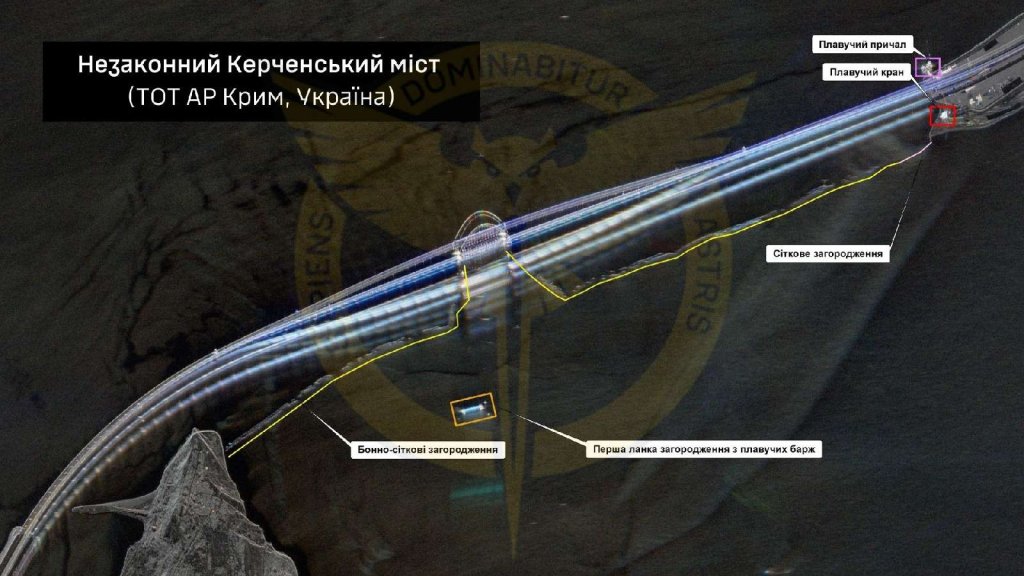
“The huge advantage of the ICEYE space vehicle is its ability to clearly see a cluster of even carefully camouflaged enemy mechanized units with its equipment,” GUR added. “What do you think happens to them later?”
A fundraising effort for the satellite began in June 2022 by the Serhiy Prytula Charitable Foundation and blogger Ihor Lachenkov.
“One satellite fully operates for the needs of our defense, nearly two dozen more are involved when necessary,” then-Ukrainian Defense Minister Oleksiy Reznikov said that the time.
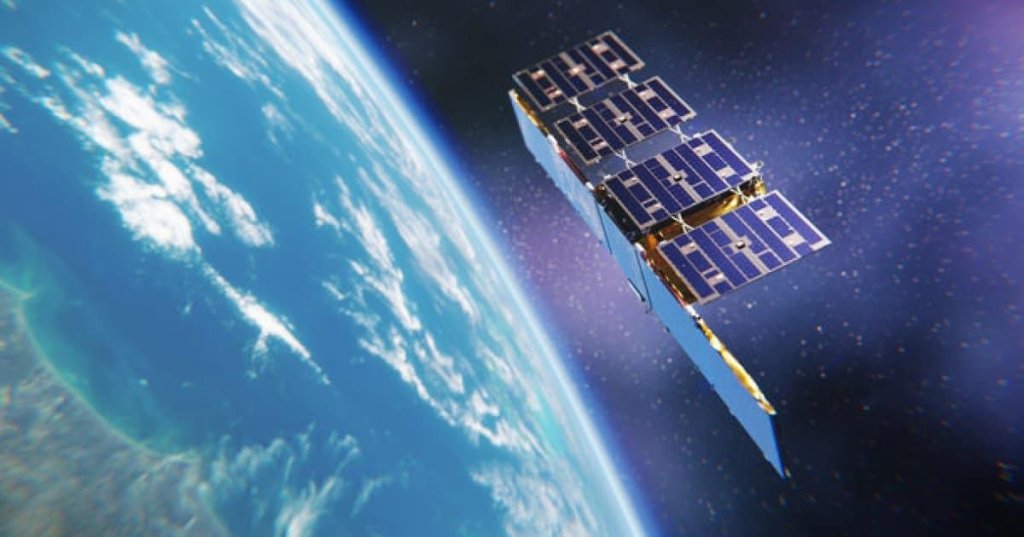
Ukraine first reported its use of the satellite and how it helped them on Sept. 29, 2022.
“Combat teams of the Armed Forces of Ukraine have been receiving a stream of data from ICEYE satellites for some time now,” Reznikov said. “The shots are directly deciphered and processed by the military intelligence specialists of the Ministry of Defense who have undergone relevant training.”
Reznikov could not reveal too many specifics, but said “in the first two days of the satellite operation, more than 60 units of combat equipment were discovered that the enemy was trying to disguise in the forest lanes and other obstacles. It was discovered because ICEYE satellites collect information using Synthetic Aperture Radar (SAR) technology. This technique would be very difficult or impossible to notice by the means of optical satellites.”
Those coordinates were “promptly transferred to inflict a fiery effect” in Kherson and Donetsk oblasts, he added. “In fact, only in these two days, the enemy has lost armor equipment for more than the entire satellite project costs.”
Given the success Ukraine says it has had with the ICEYE satellite and associated constellation, it is very likely is Russia is watching them closely, though any moves to counter it has not been disclosed. Russia has a growing array of anti-satellite capabilities, including relatively exotic on-orbit platforms. As we reported last month, Russia has already launched some kind of clandestine testbed in space as part of its development of a nuclear-armed on-orbit anti-satellite weapon, which serves as a reminder of just how serious Moscow takes the need for expanded counter-space capabilities.
While having control over one SAR satellite and access to dozens is far from matching the space capabilities enjoyed by Russia, this arrangement has clearly helped Ukraine, adding another layer of organic surveillance to the ubiquitous drones that patrol the much-lower skies over the battlefield.
Contact the author: howard@thewarzone.com
